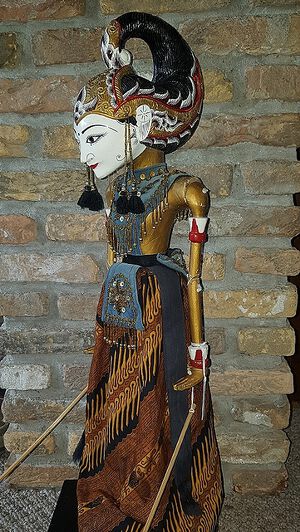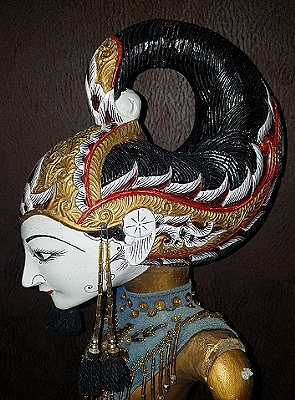Pandu: Difference between revisions
(Created page with "My name is Manuel and I am studying Directing and Neuroscience at St Levan / Great Britain.<br><br>Also visit my web-site Kometa web casino ([https://game-ss.ru/ game-ss.ru]) ") |
(Created page with "My name is Manuel and I am studying Directing and Neuroscience at St Levan / Great Britain.<br><br>Also visit my web-site Kometa web casino ([https://game-ss.ru/ game-ss.ru]) ") |
||
| Line 1: | Line 1: | ||
[[File:Pandu 01 - 492-3 .jpg|thumb]] | [[File:Pandu 01 - 492-3 .jpg|thumb|''Pandu - a great archer'']] | ||
[[File:Pandu 02 - 492-3 .jpg|thumb]] | [[File:Pandu 02 - 492-3 .jpg|thumb]] | ||
{{Puppets | {{Puppets | ||
Revision as of 06:12, 12 September 2023
| Title | Pandu - (Prabu - Raden) - Mahabharata |
|---|---|
| Other names | Sudarma (young) |
| Size | 60 cm |
| Personal data | Prabu Pandudewanata, son of Prabu Abyasa, king of Astina and father of the fifth Pendawa. King Pandudewanata has two daughters. First, Dewi Kuntinalibrangta, daughter of Prabu Kuntiboja, the king of Madura, gave birth to: Yudistira, Wrekodara, and Arjuna. Second, Dewi Madrim, daughter of King Madraka, Prabu Salya's brother, had sons: Nakula and Sadewa (twins). These five brothers are called Pendawa. |
| Appearance | ... |
| Collection | Private collection |
Pandu - (Prabu - Raden) - Mahabharata
Prabu Pandu did not reign in Astina for long, because the Gods considered him to have made a big mistake. Pandu's hobby is hunting in the forest. One time he mistakenly killed two deer which were the creation of a priest and his wife.
This confusion caused the wrath of the Gods. Pandu was taken by the Gods and with his rough body was thrown into the Candramimuka Crater (Hell). But by using Begawan Abyasa followed and asked Pandu with the intention of bringing him back to the world. His request was not granted, but Pandu was taken to Heaven and made a God.
Prabu Pandudewanata has squinty eyes, a pointed nose, a tight mouth, a curly lizard bun, and a waderan haircut. Mentioned in the story, Pandu was crippled in the neck. Long necklaces, bracelets, pomto and kroncong.
Source: History of Wayang Purwa - Hardjowirogo - PN Balai Pustaka - 1982


